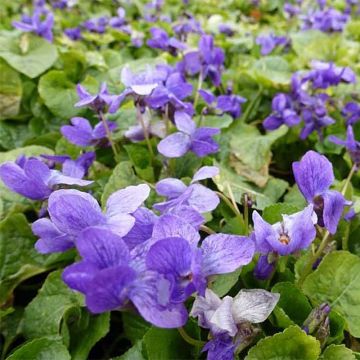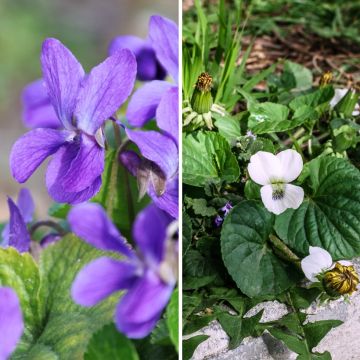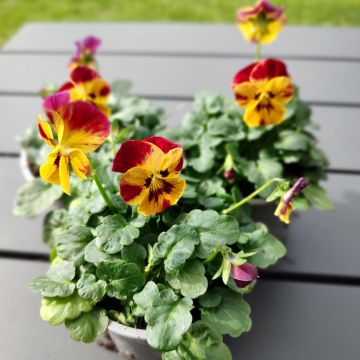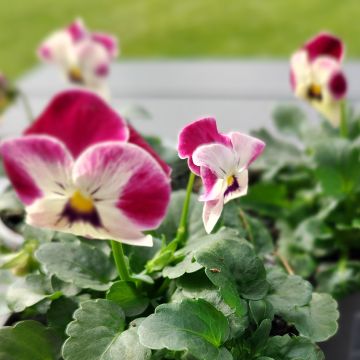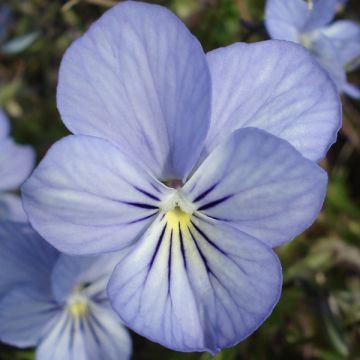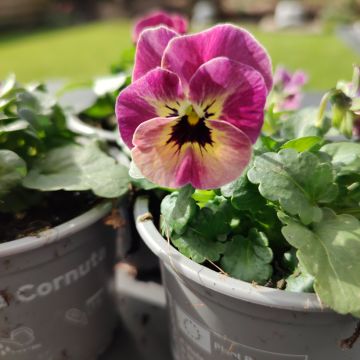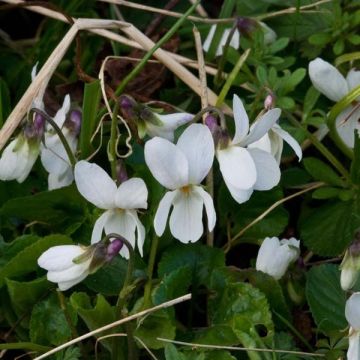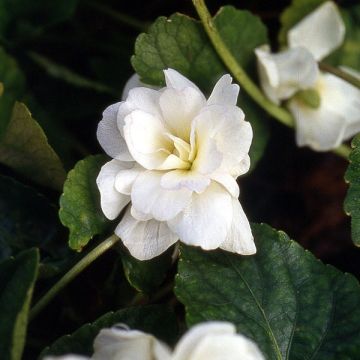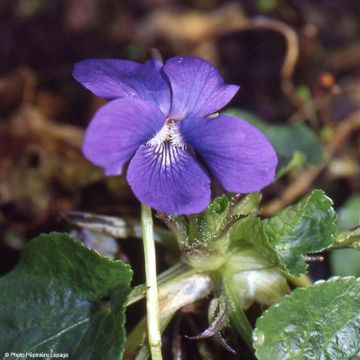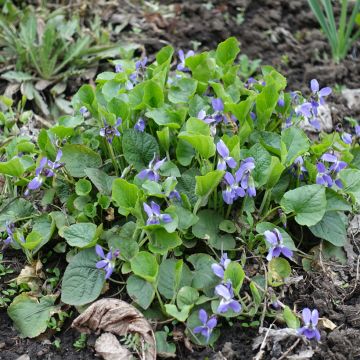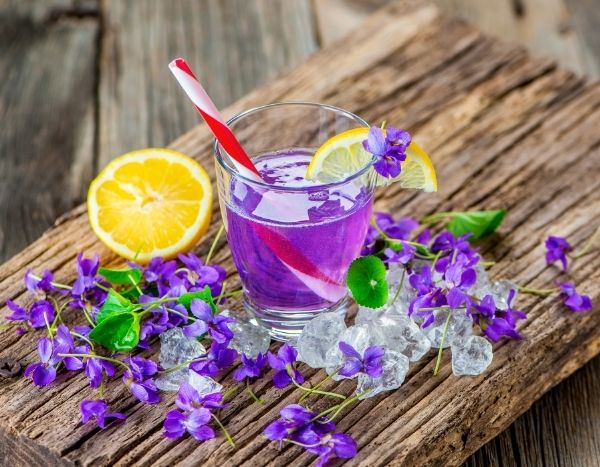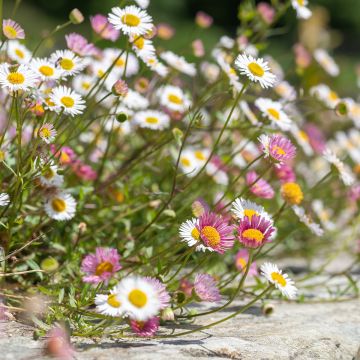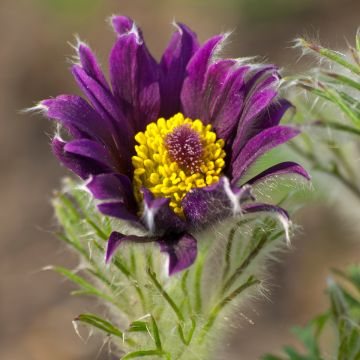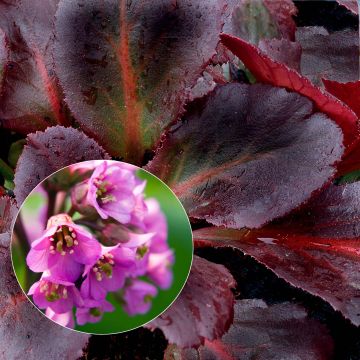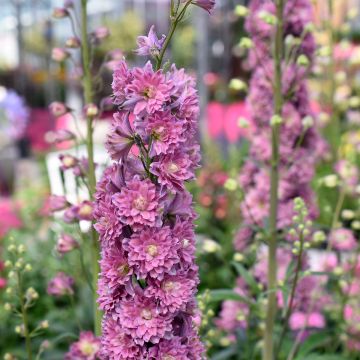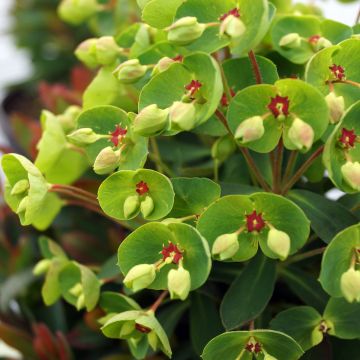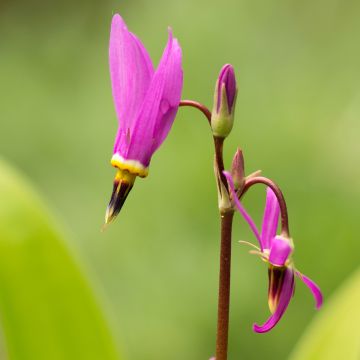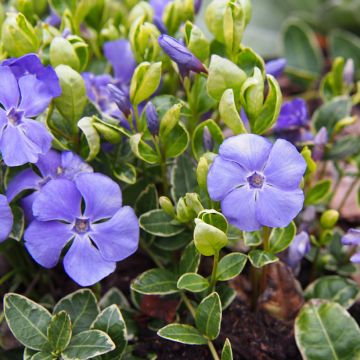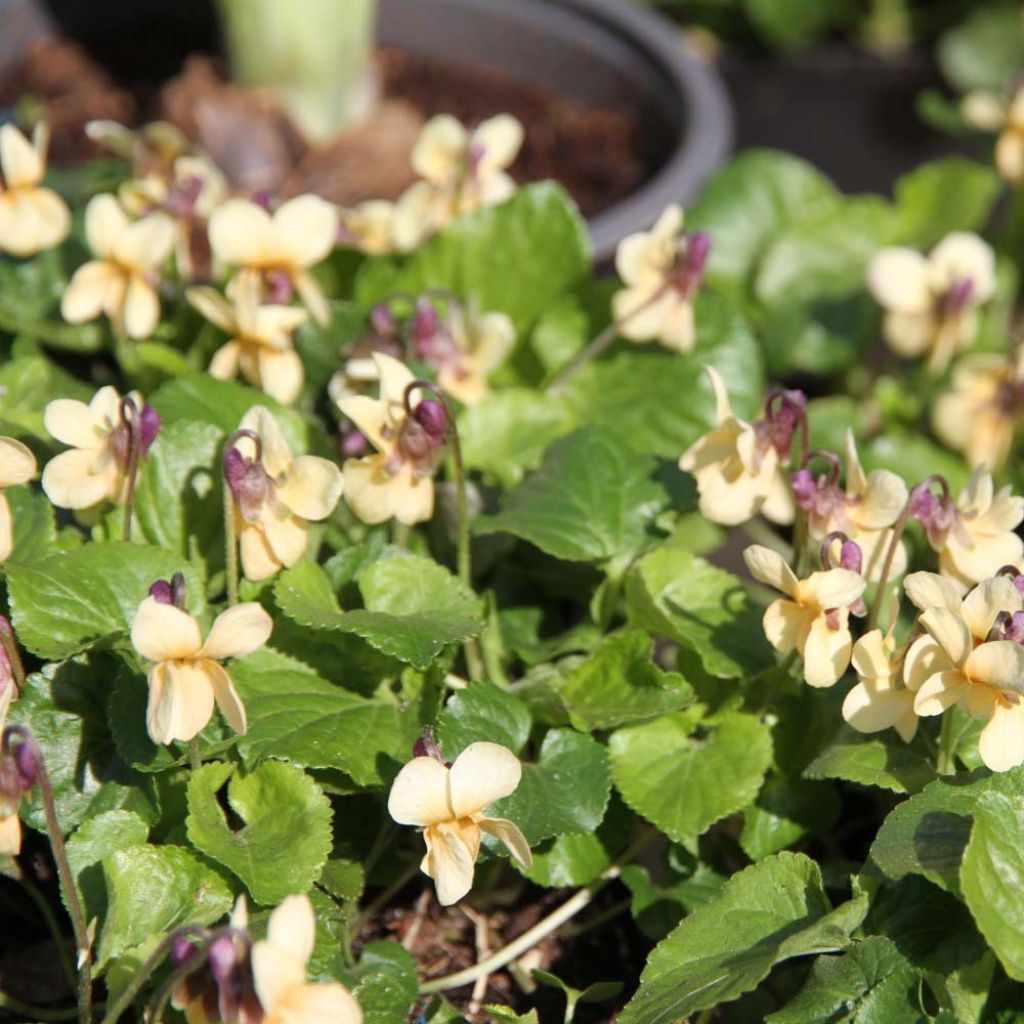

Viola odorata Vanilla
View more pictures
Hide images
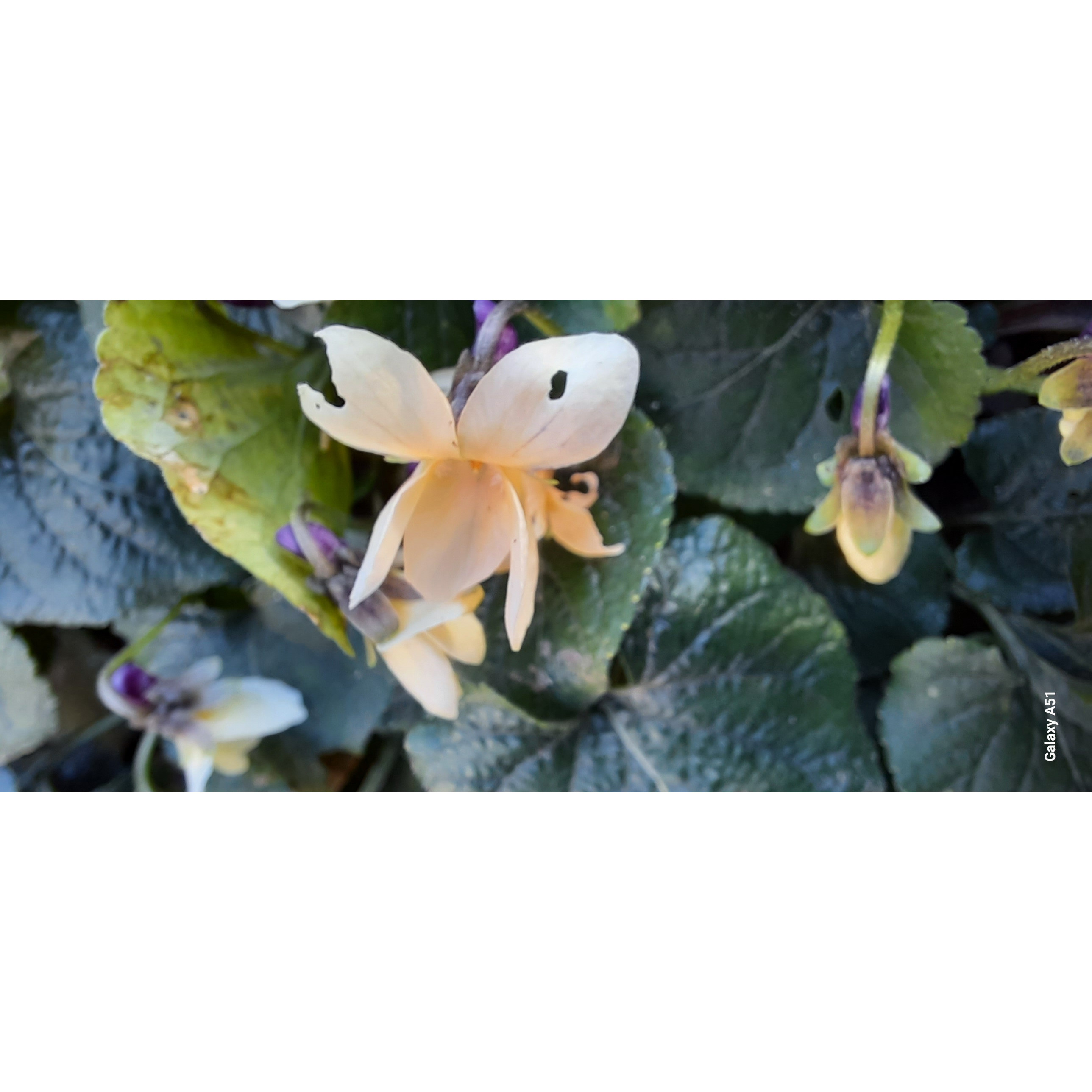
Sandrine C.

Yellow Viola
Sandrine C. • 61 FR

Sandrine C.

Sandrine C. • 61 FR
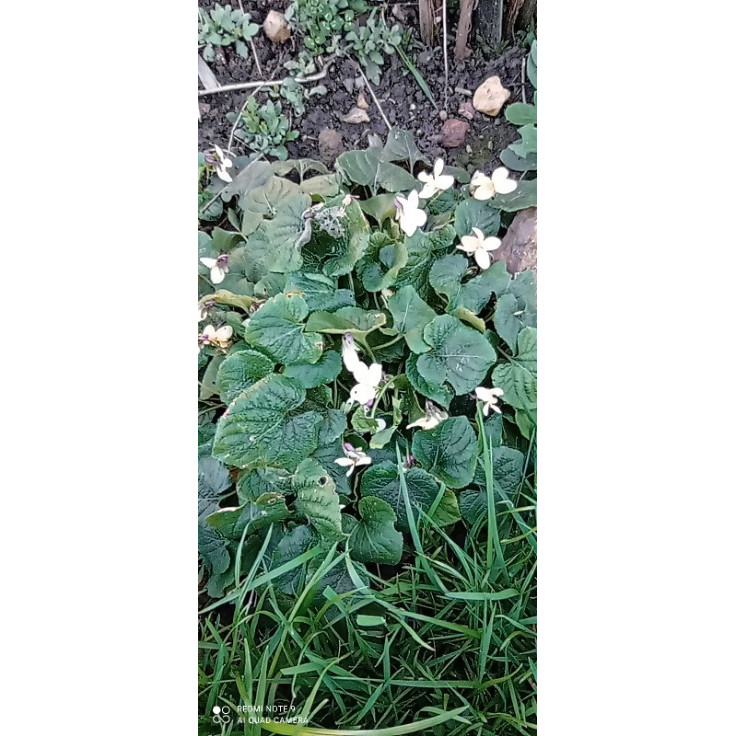
Sandrine C.

Yellow March Viola
Sandrine C. • 61 FR
Viola odorata Vanilla
Viola odorata Vanilla
Sweet Violet, English Violet, Garden Violet, Common Violet, English Violet, March Violet
Hello, I was disappointed to find my violet violet instead of pale yellow. Unfortunately, the variety is not the right one.
Jardi, 25/05/2024
Special offer!
Receive a €20 voucher for any order over €90 (excluding delivery costs, credit notes, and plastic-free options)!
1- Add your favorite plants to your cart.
2- Once you have reached €90, confirm your order (you can even choose the delivery date!).
3- As soon as your order is shipped, you will receive an email containing your voucher code, valid for 3 months (90 days).
Your voucher is unique and can only be used once, for any order with a minimum value of €20, excluding delivery costs.
Can be combined with other current offers, non-divisible and non-refundable.
Why not try an alternative variety in stock?
View all →This plant carries a 12 months recovery warranty
More information
We guarantee the quality of our plants for a full growing cycle, and will replace at our expense any plant that fails to recover under normal climatic and planting conditions.
Would this plant suit my garden?
Set up your Plantfit profile →
Description
Viola odorata 'Vanilla' lives up to its name. This variety of scented violet stands out for the creamy yellow colour of its flowers, which is very rare among violets. They bloom in spring on a beautiful dense carpet of dark green leaves, exhaling a delicate fragrance. In the garden, it easily and quickly establishes itself in shaded areas, even occasionally dry ones, beautifying the soil where many perennials struggle to grow. It also makes charming flower pots when planted at the base of larger plants that will bloom in summer.
Viola odorata, also known as European violet, is also called by various regional names such as Sweet Violet, English Violet, Garden Violet, Common Violet, English Violet and March Violet. This small perennial of the Violaceae family is native to clear woods, edges, hedges, lawns, meadows, and roadside verges.
'Vanilla', sometimes mistakenly marketed under the names Viola odorata 'Sulphurea' or 'Irish Elegans', has a somewhat mysterious genealogy. The unusual colour of its flowers has often raised doubts about its relationship with Viola odorata. This fast-growing cultivar effectively covers the ground with small rounded and crinkled tufts composed of tightly packed heart-shaped leaves, which are quite dark green. The plant spreads through short stolons, similar to strawberries. The foliage, more or less evergreen, up to 5 cm (2in) tall, may disappear in summer in case of drought. The flowering of this Vanilla variety takes place in March-April, sometimes as early as February if the weather permits. Clumps of leaves appear on peduncles 12-15 cm (5-6in) tall, each bearing a violet-coloured bud bent towards the ground, which opens up into a delicate yellow flower. Made up of 5 petals, they exhale a delicate but distinct floral fragrance, slightly green and sweet. The flower of the scented violet is commonly used in pastry making; the leaves are also edible.
The fragrant 'Vanilla' violet will thrive in almost any location, as long as it is planted in a semi-shaded position that is not too dry. It can be used to adorn the base of trees and bushes, in borders, along pathways, or in rock gardens where it often self-seeds. For example, you can associate it with primroses, pansies or horned violets, lily of the valley, liverworts, and small ferns. It can also be grown in pots or containers to be placed on the windowsill (for its light fragrance), or on the patio, without forgetting to water it.
Violets and pansies belong to the Viola genus. How can you differentiate a violet from a pansy? By the arrangement of their petals: the former has two upright petals and three petals pointing downwards, while the latter has four upright petals, with the fifth, larger than the others, drooping. Violets are almost all native to temperate regions of the globe. The vast majority of them are perennials, but hybrids with large flowers are sold and used as annual plants.
Report an error about the product description
Viola odorata Vanilla in pictures
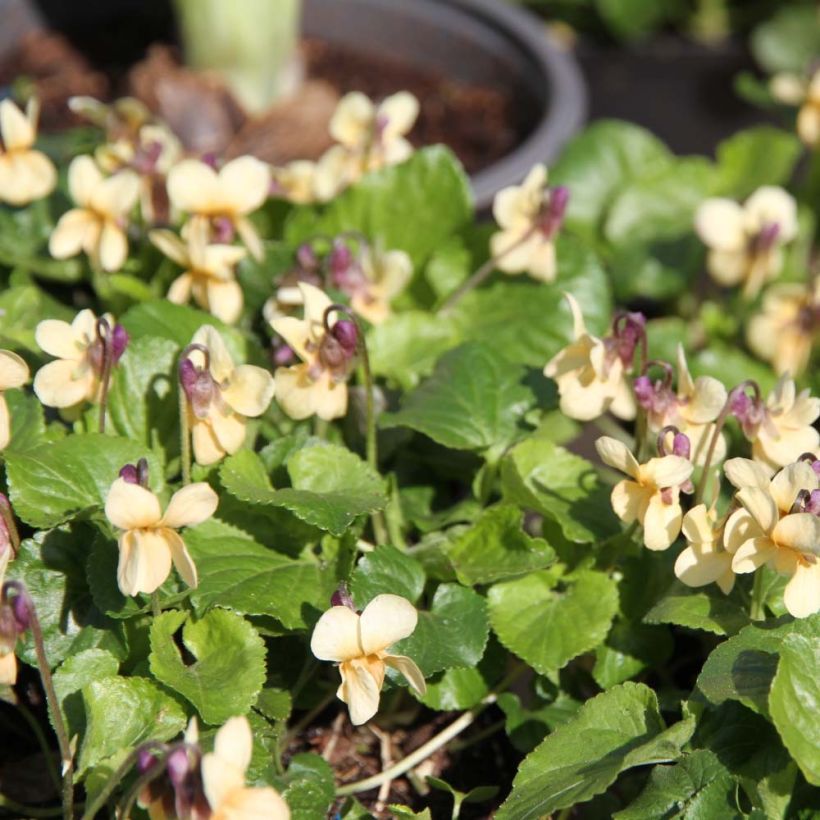

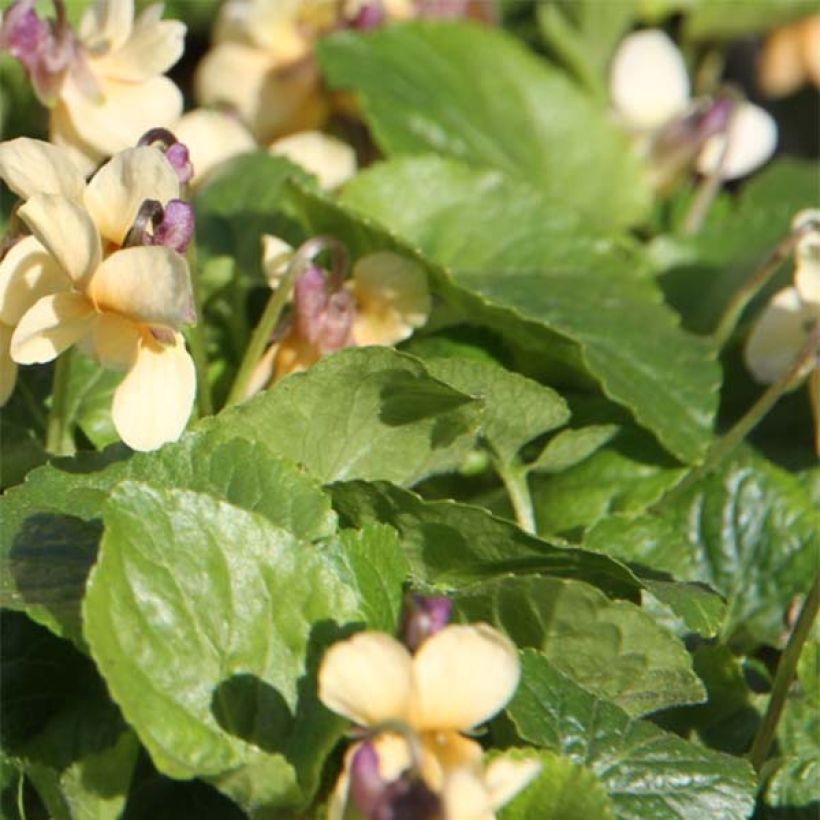

Flowering
Foliage
Plant habit
Botanical data
Viola
odorata
Vanilla
Violaceae
Sweet Violet, English Violet, Garden Violet, Common Violet, English Violet, March Violet
Cultivar or hybrid
Other Viola - Violets
View all →Planting and care
Planting period
Intended location
Care
Planting & care advice
-
, onOrder confirmed
Reply from on Promesse de fleurs
Similar products
Haven't found what you were looking for?
Hardiness is the lowest winter temperature a plant can endure without suffering serious damage or even dying. However, hardiness is affected by location (a sheltered area, such as a patio), protection (winter cover) and soil type (hardiness is improved by well-drained soil).

Photo Sharing Terms & Conditions
In order to encourage gardeners to interact and share their experiences, Promesse de fleurs offers various media enabling content to be uploaded onto its Site - in particular via the ‘Photo sharing’ module.
The User agrees to refrain from:
- Posting any content that is illegal, prejudicial, insulting, racist, inciteful to hatred, revisionist, contrary to public decency, that infringes on privacy or on the privacy rights of third parties, in particular the publicity rights of persons and goods, intellectual property rights, or the right to privacy.
- Submitting content on behalf of a third party;
- Impersonate the identity of a third party and/or publish any personal information about a third party;
In general, the User undertakes to refrain from any unethical behaviour.
All Content (in particular text, comments, files, images, photos, videos, creative works, etc.), which may be subject to property or intellectual property rights, image or other private rights, shall remain the property of the User, subject to the limited rights granted by the terms of the licence granted by Promesse de fleurs as stated below. Users are at liberty to publish or not to publish such Content on the Site, notably via the ‘Photo Sharing’ facility, and accept that this Content shall be made public and freely accessible, notably on the Internet.
Users further acknowledge, undertake to have ,and guarantee that they hold all necessary rights and permissions to publish such material on the Site, in particular with regard to the legislation in force pertaining to any privacy, property, intellectual property, image, or contractual rights, or rights of any other nature. By publishing such Content on the Site, Users acknowledge accepting full liability as publishers of the Content within the meaning of the law, and grant Promesse de fleurs, free of charge, an inclusive, worldwide licence for the said Content for the entire duration of its publication, including all reproduction, representation, up/downloading, displaying, performing, transmission, and storage rights.
Users also grant permission for their name to be linked to the Content and accept that this link may not always be made available.
By engaging in posting material, Users consent to their Content becoming automatically accessible on the Internet, in particular on other sites and/or blogs and/or web pages of the Promesse de fleurs site, including in particular social pages and the Promesse de fleurs catalogue.
Users may secure the removal of entrusted content free of charge by issuing a simple request via our contact form.
The flowering period indicated on our website applies to countries and regions located in USDA zone 8 (France, the United Kingdom, Ireland, the Netherlands, etc.)
It will vary according to where you live:
- In zones 9 to 10 (Italy, Spain, Greece, etc.), flowering will occur about 2 to 4 weeks earlier.
- In zones 6 to 7 (Germany, Poland, Slovenia, and lower mountainous regions), flowering will be delayed by 2 to 3 weeks.
- In zone 5 (Central Europe, Scandinavia), blooming will be delayed by 3 to 5 weeks.
In temperate climates, pruning of spring-flowering shrubs (forsythia, spireas, etc.) should be done just after flowering.
Pruning of summer-flowering shrubs (Indian Lilac, Perovskia, etc.) can be done in winter or spring.
In cold regions as well as with frost-sensitive plants, avoid pruning too early when severe frosts may still occur.
The planting period indicated on our website applies to countries and regions located in USDA zone 8 (France, United Kingdom, Ireland, Netherlands).
It will vary according to where you live:
- In Mediterranean zones (Marseille, Madrid, Milan, etc.), autumn and winter are the best planting periods.
- In continental zones (Strasbourg, Munich, Vienna, etc.), delay planting by 2 to 3 weeks in spring and bring it forward by 2 to 4 weeks in autumn.
- In mountainous regions (the Alps, Pyrenees, Carpathians, etc.), it is best to plant in late spring (May-June) or late summer (August-September).
The harvesting period indicated on our website applies to countries and regions in USDA zone 8 (France, England, Ireland, the Netherlands).
In colder areas (Scandinavia, Poland, Austria...) fruit and vegetable harvests are likely to be delayed by 3-4 weeks.
In warmer areas (Italy, Spain, Greece, etc.), harvesting will probably take place earlier, depending on weather conditions.
The sowing periods indicated on our website apply to countries and regions within USDA Zone 8 (France, UK, Ireland, Netherlands).
In colder areas (Scandinavia, Poland, Austria...), delay any outdoor sowing by 3-4 weeks, or sow under glass.
In warmer climes (Italy, Spain, Greece, etc.), bring outdoor sowing forward by a few weeks.






























